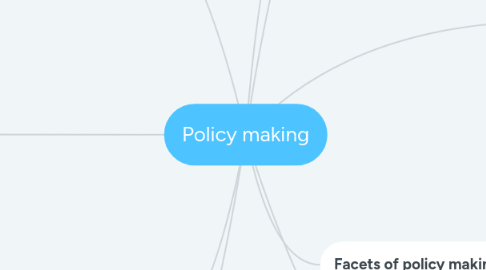Policy making
by Mikaela Scuderi


1. Policy making process varies due to governmental structure
1.1. How much of the decision making is influenced by groups outside of the government
1.2. Active vs reactive
1.2.1. radicalism and innovation vs reacting to issues already at hand
1.3. Liberal-pluralist vs etatist vs neo-corporatist
1.3.1. market place-competing for decision making power vs state solution vs involved organisations/interest groups
1.4. Adversarial vs consensual paternalistic
1.4.1. Coercion vs consultation
1.5. Legalistic vs pragmatic
1.5.1. formal/regulations and rules vs flexible and informal
1.6. Comprehensive vs incremental
1.6.1. large plan vs step by step
2. People involved
2.1. Politicians
2.2. People-power/general public
2.3. Non-government organisations
2.4. Political parties
2.5. Interest groups
2.6. Media
2.7. Researchers/scientists
3. Policy cycle/process
3.1. Agenda setting, policy formulation, adoption, implementation and evaluation
3.2. continuous cycle of decisions that affect future policy
3.3. Response to the identification of an issue that needs addressing
3.4. various policies are proposed before adoption
4. Policy analysis triangle
4.1. Context
4.1.1. values, structure, objectives
4.2. Content
4.2.1. legislation, existing policy, regulations, knowledge
4.3. Actors
4.3.1. institutions, individuals, groups
